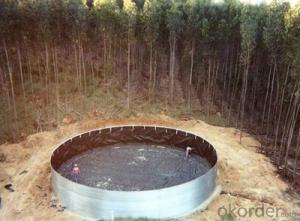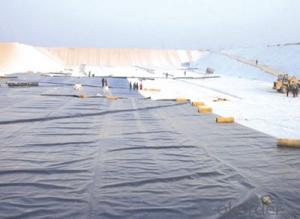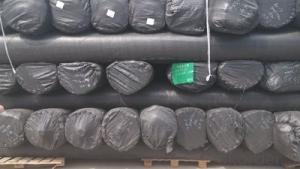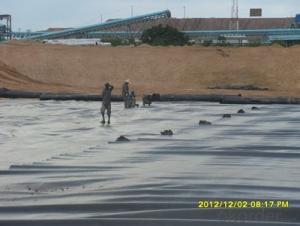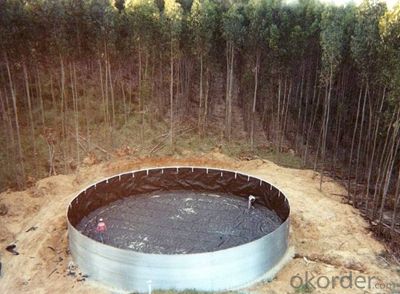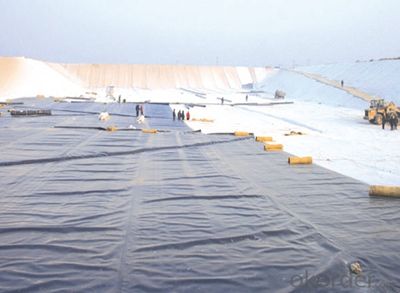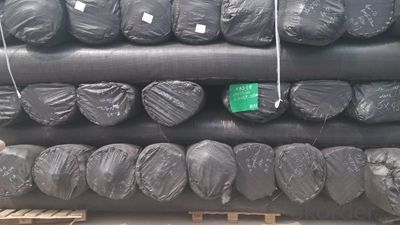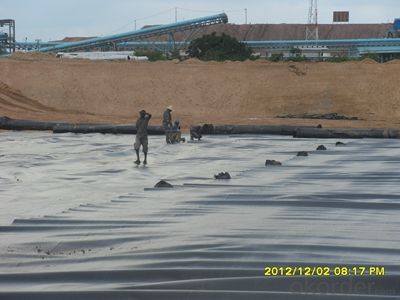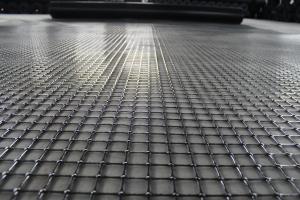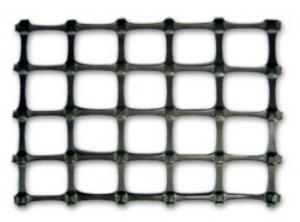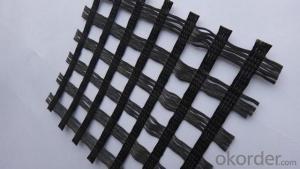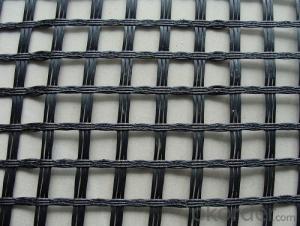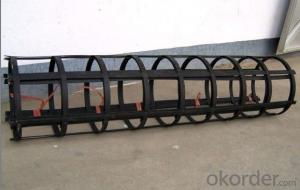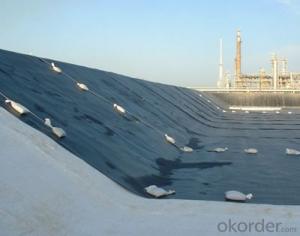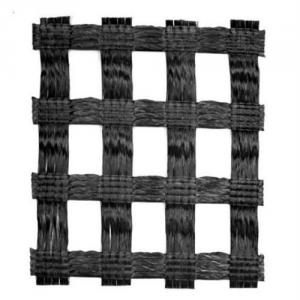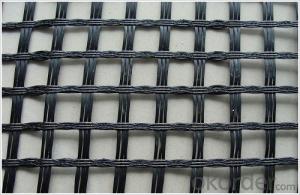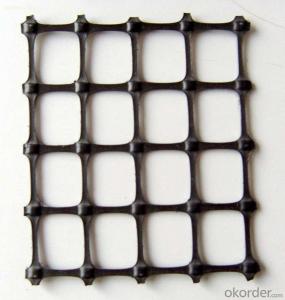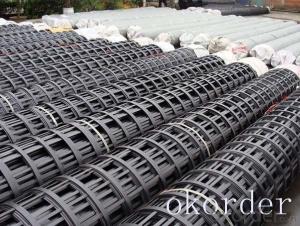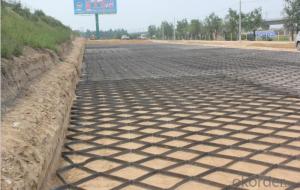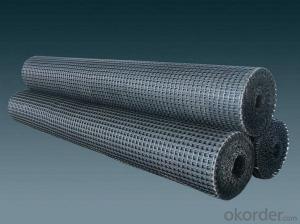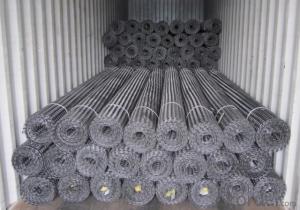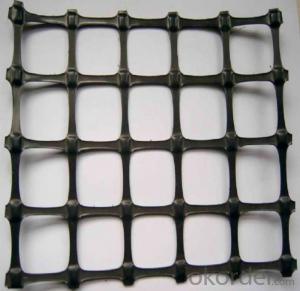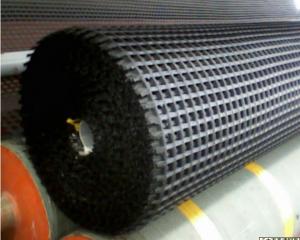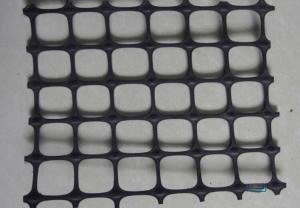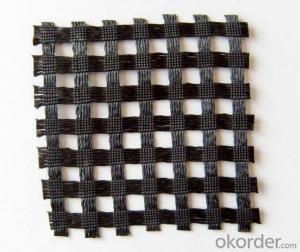Smooth Base Reinforcement Geogrids Geomembrane for Railway Tunnels
- Loading Port:
- Tianjin
- Payment Terms:
- TT OR LC
- Min Order Qty:
- 88 m²
- Supply Capability:
- 1800000 m²/month
OKorder Service Pledge
OKorder Financial Service
You Might Also Like
The description of Smooth Geomembrane with Straps for Tunnel
Made from extrusion technology with high strength straps evenly distributed on the surface,
Specification of Smooth Geomembrane with Straps for Tunnel:
I. Thickness: L. Omm- 3. Omm
2.2m- 4m in roll width, the length as client 's request
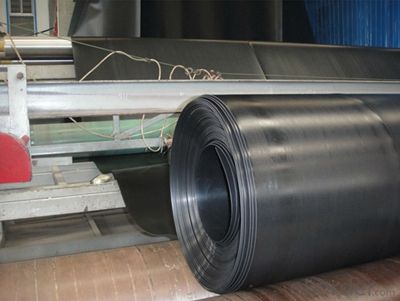
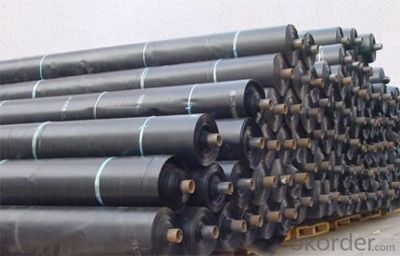
Feature or Property of Smooth Geomembrane with Straps for Tunnel:
I. Good flexibility
2. Excellent in waterproofing and separation, easy for construction
3. Resist to chemical erosion, hig h climate bearing ability
4. Could be suspension type hanging during construction without insert nails, increase laying
Quality and efficiency
Application of Smooth Geomembrane with Straps for Tunnel:
I. Tunnels of railway and highway
2. Subway projects
3. Basement of mineral and municipal projects
Production standard of Smooth Geomembrane with Straps for Tunnel:
GB18173.1-2012
Area |
|
Hydraulic | Lagooning and Water Treatment, Ornamental Ponds, Golf Courses Aquaculture and Desalination Water LagoonsTanks, Reservoirs, Liquid WasteFloating Cover SolutionsDrainage and FiltrationShading Cover Solutions |
Environment | Tailing ponds, Leach mining,Landfills,Landfill Capping,Protection against corrosion,Vertical Barriers |
Civil Works | Erosion Control, Secondary Containment, Tunnels,Linear and Surface Works,Consolidation of Margins,Soil Reinforcement,Soil Separation. |
Building | Parkings,Roofing,Soundproofing building |
Introduction of CNBM
China National Building Materials (Group) Corporation (CNBM) is a state-owned enterprise in charge of administrative affairs in China building materials industry. Established in 1984, CNBM is a large group corporation of building materials with total assets of RMB 25 billion and a total staff of 30,000. Now CNBM owns more than 200 subsidiaries in and abroad the country, including wholly-owned corporations and joint ventures.
FAQ of geosynthetics :
What is geosynthetics ?
Geosynthetics form a perfect erosion control fabric used extremely widely in civil engineering to stabilize and reinforce slopes and soil under or next to roads, railways, dams, water reservoirs etc.. They can be easily applied which minimizes the time of construction, as well as they limit the resources and materials necessary.
What kinds of geosynthetics we have ?
Non-woven geotextile, geogrids, geocells, GCL, Geomembranes, Geonets, Geocomposites etc .
What is the geosynthetics used for ?
Hydraulic
Lagooning and Water Treatment, Ornamental Ponds, Golf Courses
Aquaculture and Desalination,Water Lagoons,Tanks, Reservoirs, Liquid Waste,Floating Cover Solutions, Drainage and Filtration
Environment
Tailing ponds, Leach mining,Landfills,Landfill Capping,Protection against corrosion,Vertical Barriers
Civil Works
Erosion Control,Secondary Containment,Tunnels,Linear and Surface Works,Consolidation of Margins,Soil Reinforcement,Soil Separation.
Building - Parkings,Roofing,Soundproofing
- Q: Can geogrids be used in temporary construction haul roads?
- Yes, geogrids can be used in temporary construction haul roads. Geogrids are commonly used in road construction to improve soil stability and reinforcement. They provide effective load distribution and prevent the lateral movement of soil particles, thereby increasing the load-bearing capacity of the road. In temporary construction haul roads, where heavy equipment and frequent traffic are involved, geogrids can be a useful solution to enhance road performance and durability.
- Q: How do geogrids improve the load-bearing capacity of foundations?
- Geogrids improve the load-bearing capacity of foundations by distributing and transferring the load more evenly across the soil, reducing the potential for settlement and instability. The geogrids act as reinforcement, increasing the tensile strength of the soil and preventing excessive lateral movement. This results in a more stable foundation that can support heavier loads and withstand external forces such as wind or seismic activity.
- Q: What is the effect of installation damage on geogrid performance in long-term applications?
- The effect of installation damage on geogrid performance in long-term applications can be detrimental. Installation damage, such as punctures, tears, or stretching, can weaken the geogrid's structural integrity and reduce its ability to provide long-term reinforcement. This can lead to decreased stability, reduced load-bearing capacity, and potential failure of the geogrid system over time. Therefore, it is crucial to handle and install geogrids carefully to minimize any damage and ensure optimal performance in long-term applications.
- Q: Can geogrids be used in temporary construction platforms for heavy equipment?
- Yes, geogrids can be used in temporary construction platforms for heavy equipment. Geogrids are strong and durable, providing stability and reinforcement to the ground. They can distribute the weight of heavy equipment, prevent soil erosion, and improve load-bearing capacity, making them suitable for temporary construction platforms.
- Q: What is the recommended spacing between geogrid layers?
- The recommended spacing between geogrid layers can vary depending on the specific project and soil conditions. However, in general, a spacing of about 2 to 3 feet (0.6 to 0.9 meters) is often recommended to achieve optimal reinforcement and stability.
- Q: How to calculate the amount of geogrid works under what circumstances need to lay geogrid
- Of course, mainly depends on what kind of material you are using geogrid, I said above is fiberglass geogrid.
- Q: How do geogrids improve the performance of geosynthetic-reinforced slopes in seismic zones?
- Geogrids improve the performance of geosynthetic-reinforced slopes in seismic zones by enhancing the stability and resistance to seismic forces. The geogrids act as a reinforcement material, increasing the tensile strength and preventing soil movement during seismic events. They help distribute the seismic forces more evenly, reducing the potential for slope failure and improving overall slope stability.
- Q: What are the factors to consider when selecting geogrids for a project?
- When selecting geogrids for a project, it is important to consider factors such as the site conditions, load requirements, and the desired application. The site conditions, including soil type, slope stability, and groundwater levels, will determine the type and strength of geogrid needed. Load requirements, such as traffic or equipment loads, will impact the geogrid's tensile strength and durability. Additionally, considering the desired application, such as soil stabilization, retaining walls, or erosion control, will help determine the appropriate geogrid material and design.
- Q: How is a geogrid different from other geosynthetic materials?
- A geogrid is different from other geosynthetic materials in that it is specifically designed to provide high tensile strength and stiffness. Unlike other geosynthetics such as geotextiles or geomembranes, which are primarily used for filtration, separation, or containment purposes, geogrids are used to reinforce and stabilize soil structures. Geogrids have a grid-like structure that enhances their ability to distribute loads and improve the overall strength of the soil, making them ideal for applications like road construction, retaining walls, and slope stabilization.
- Q: What are the advantages of using geogrids in flexible pavements?
- There are several advantages of using geogrids in flexible pavements. Firstly, geogrids provide increased pavement strength and stability by distributing stress and reinforcing the pavement layers. This helps to prevent cracking and rutting, especially in areas with heavy traffic loads. Secondly, geogrids improve the load-bearing capacity of the pavement, allowing for the use of thinner pavement layers. This reduces construction costs and materials, making it a cost-effective solution. Additionally, geogrids help to control and reduce pavement deformation caused by settlement, expansion, and contraction. This leads to longer pavement lifespan and reduced maintenance requirements. Lastly, geogrids enhance the overall resilience and durability of the pavement, making it more resistant to environmental factors such as temperature variations, moisture, and freeze-thaw cycles. Overall, the use of geogrids in flexible pavements offers numerous benefits in terms of increased strength, improved load-bearing capacity, reduced deformation, and enhanced durability, making it a preferred choice for pavement construction.
Send your message to us
Smooth Base Reinforcement Geogrids Geomembrane for Railway Tunnels
- Loading Port:
- Tianjin
- Payment Terms:
- TT OR LC
- Min Order Qty:
- 88 m²
- Supply Capability:
- 1800000 m²/month
OKorder Service Pledge
OKorder Financial Service
Similar products
Hot products
Hot Searches
Related keywords
